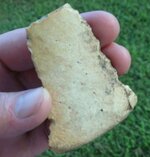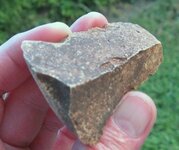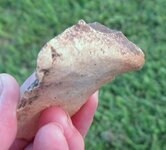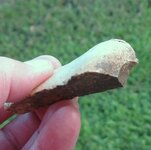naturegirl
Bronze Member
- Mar 21, 2009
- 2,356
- 402
Hi all, what is this? just a rock? the edges sure looked worked, but I haven't seen anything like that rounded end on this forum, so I'm asking, is this just a chunk they knocked off? The side with the ridge is really rough, I guess it's flint, because of the uniface, but it's dull and seems more porous. Thanks for looking,
naturegirl
naturegirl
Attachments
Upvote
0








